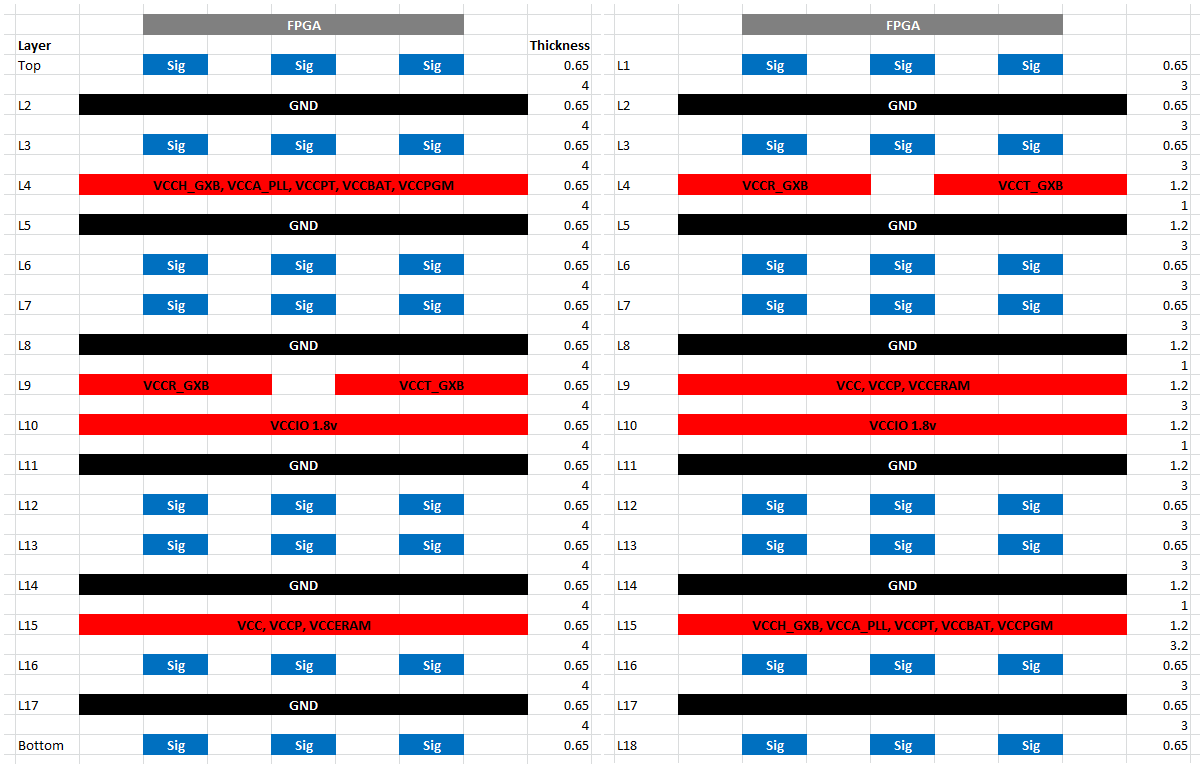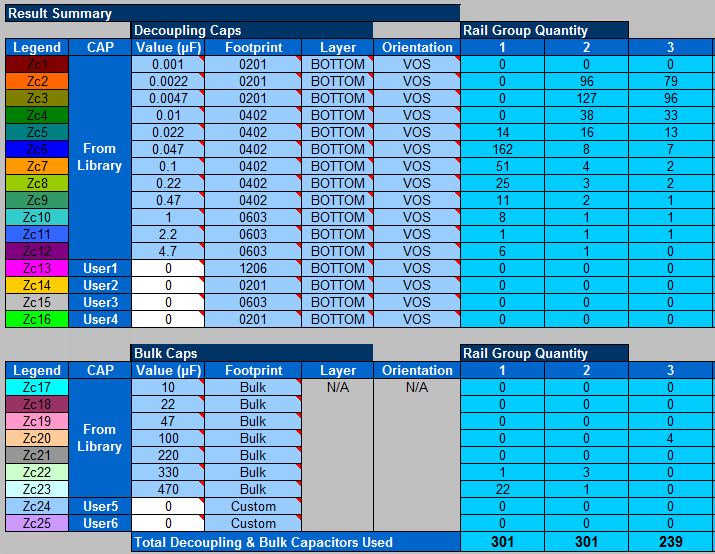Visible to Intel only — GUID: jba1434040229634
Ixiasoft
Visible to Intel only — GUID: jba1434040229634
Ixiasoft
1.6.6. Moving Power and Ground Planes Closer Together
The impedance plots imply the challenge is in meeting the target impedance at high frequencies. Higher frequency decoupling can be achieved by increasing the capacitance of the power and ground supply planes. This can be achieved by moving the power and ground plane pair closer to each other.
Increasing the surface area of the power and ground plane pair also increases the inter-plane capacitance. The default PDN Tool plane size is used throughout this application note. You can change the plane capacitance and resistance for each power group in the PDN Tool.
Reducing the original stackup power and ground separation to 1 mil from 4 mils should show an improvement. In the following example, in order to reduce plane resistance, the plane thickness of the power/ground pairs has been increased to 1.2 mil. The figure below compares the original layer-stack (left) with the new stack (right).

The PDN Tool shows that moving the power and ground planes closer together increases the VCC supply Feffective to 36.71MHz.

Moving the power and ground planes closer together reduces the number of decoupling capacitors for the VCCR_GXB supply to 239. More than 301 capacitors are still required for VCC and VCCT_GXB.


It is clear that improvements in the PCB result in better VCC performance and requires fewer PCB decoupling capacitors for the VCCR_GXB supply but optimization is still required.